Ower
Houses within 15km of this house
Displaying 69 houses.
Houses within 15km of Ower
Displaying 69 houses.
| House name | Description | |
|---|---|---|
| Garracloon | Wilson refers to Garracloon as the seat of Mr. Blake in 1786. In 1814 the house was occupied by the Reverend Cecil Crampton, rector of the parish of Cong. At the time of the first Ordnance Survey in 1838 Garracloon house was recorded as a ruin. At the time of Griffith's Valuation, it was held in fee by Joseph Blake and valued at £8. The house was later rebuilt, Ruane refers to the ruined Victorian Garracloon House. Sir William Wilde refers to Colonel Veitch at Garracloon. No longer extant but yard buildings remain. |

|
| Dowagh | Another home of the Blakes of Garracloon. It was lived in by Mark Blake a younger brother of Manus Blake of Garracloon, until his death in 1817. At the time of the Ordnance Survey 1838 it was described as a 'beautiful little place' the residence of Mr Blake. Held by Isaac Mayne, from Henrietta Blake at the time of Griffith's Valuation. The building still retains its thatched roof and is occupied. |

|
| Strandhill | A 2 storey thatched house on the shore of Lough Corrib and situated opposite Ashford Castle, home of the Elwood family. In the late 18th century it was let to the Ireland family and in the mid 19th century to the Lynchs of Ballycurrin. The house was used as the home of the Widow Tolan in the film 'The Quiet Man' made in 1951 and was knocked down in the 1970s. It is associated with the recorder of Japanese folklore, Lafcadio Hearn, who spent a childhood holiday at Strandhill with his aunt Mrs Elwood. |

|
| Kinlough | A house on the shore of Lough Corrib, facing Ashford Castle and lived in by Patrick Moran in the 1860s and 1870s, now a ruin. |

|
| Ballymacgibbon House | The home of the Fynn family in the 18th and 19th centuries. It was held in fee by Jane Finn at the time of Griffith's Valuation, when it was valued at £20. It is now an ivy covered ruin. |

|
| Abbey House | George McNamara inhabited a house in the grounds of Cong Abbey in the 18th century but Sir William Wilde refers to only a fragment of this house remaining in 1867. Alexander Lambert also lived in a house in the Abbey grounds. Wilde describes this house as follows "More to the west there recently existed the residence of the late proprietor, A.C. Lambert Esq., constructed of the unhewn, weather-worn, but square stones, collected in the locality. Being no longer required, and not being quite congruous with the scene, it has been removed". The remains of this building are now used by the Board of Works. |
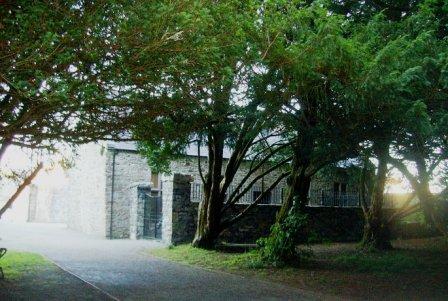
|
| Castletown | A branch of the Ellison family was living at Castletown in the 1770s and Wilson notes it as the seat of Mr. Ellison in 1786. The sale rental for the D'Arcy estate in the Encumbered Estates' Court in November 1852 refers to a small house on the property, which could be adapted as a fishing or shooting lodge. Lewis Strachan occupied the house at the time of Griffith's Valuation. A few walls of the house still remain. |

|
| Lackafinna | A house built in the 1840s close to the shore of Lough Corrib and occupied by Ormsby Elwood, brother in law of Dr Watkins Roberts. The house was renovated in 2004 and is now a family home. | |
| Houndswood | In 1786 Wilson refers to Houndswood as the seat of John D'Arcy. It was held in fee by John S. Dawson at the time of Griffith's Valuation when it was valued at £10+. A thatched house, it was accidentally burnt in the early 20th century. |

|
| Moytura | Built in 1865 as a home of Sir William Wilde, father of Oscar Wilde. Still extant and well maintained. | |
| Rathgranagher | A house on the Lindsey estate, lived in by Charles Cromie in the late 1830s. It was occupied by John Jackson at the time of Griffith's Valuation, leasing from Thomas Lindsey, when it was valued at £14. A house is still extant there. |

|
| Fountainhill | The home of a branch of the Jennings family for over a hundred years, now a ruin. The house was held in fee by Patrick Blake at the time of Griffith's Valuation, when it was valued at £10. |

|
| Cloghansmore | Occupied by Martin P. Costello at the time of Griffith's Valuation, valued at £12. Still extant and occupied. | |
| Fortville | Fortville was occupied by Robert Fair in 1814. At the time of Griffith's Valuation it was the residence of Anthony Kyne. Now the home of the Curran Flannery family, the Curran family having lived there since the 1910s. |
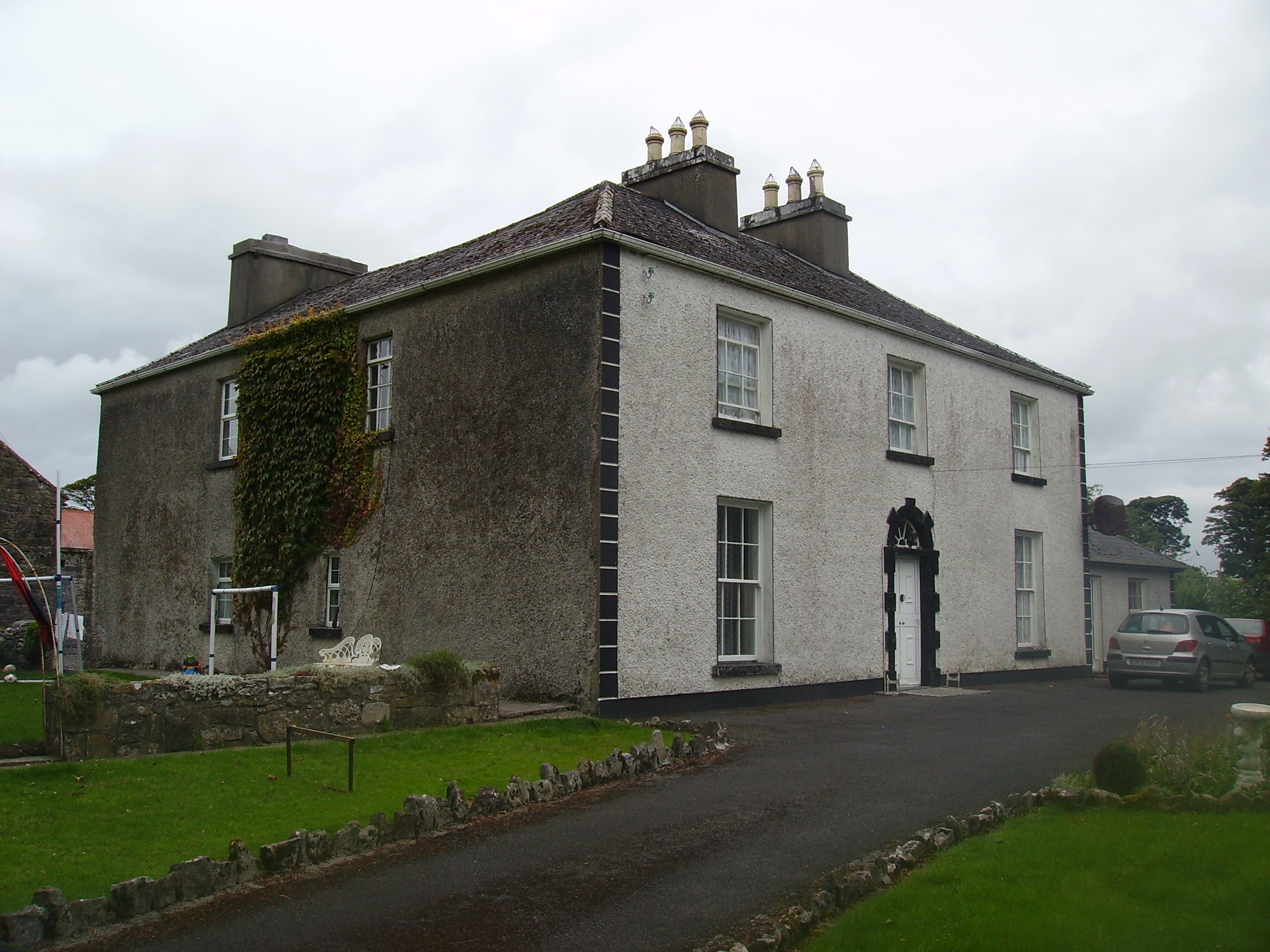
|
| Cloghans House | Lane esq was residing at Cloghan Castle in the 1770s. In 1786, however, Wilson refers to Cloghan Castle as the residence of Mr. Lewin. Ruane describes the house as early 18th century with 19th century alterations. It was held in fee by Henry H. Lewin at the time of Griffith's Valuation, when it was valued at £10. it was occupied by General Arthur Lewin in the early 20th century. He was an aviation enthuaist and went to live in Nairobi, Kenya, in the 1930s. Cloghans was sold to the McCartans in the 1940s and is now the home of the Kelly family. |

|
| Turin | Turin Castle has recently been renovated. The house no longer exists but some of the farm buildings are still visible. In the 1770s Kirwan esq occupied Turin Castle and in 1814 Arthur Browne was recorded as resident there. At the time of the first Ordnance Survey Samuel Lindsey Bucknall was living in Turin House and it was occupied by the Rutherfords in the 1850s. |
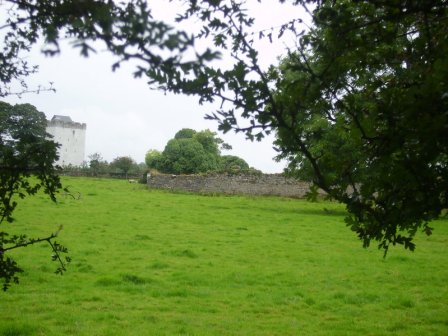
|
| Milford | Early 18th century house with some 20th century alterations. |
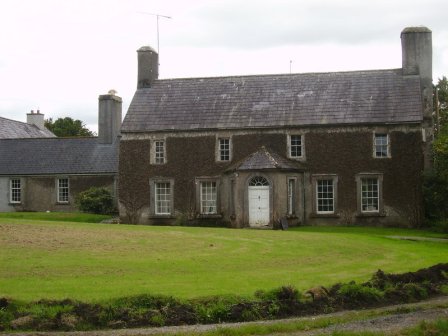
|
| The Neale | An early 18th century house, with a number of follies designed by Lord Charlemont. Wilson refers to it as "the superb and beautiful seat of Sir John Browne" in 1786. It was occupied by the Reverend James Cromie, brother-in-law of the 2nd Baron and his family, for most of the first half of the 19th century. The house was valued at £25 at the time of Griffith's Valuation. It was sold in the 1930s and most of the house is now demolished. |

|
| Moyne Lodge | Moyne Lodge was occupied by the Golding family in the early part of the 19th century and by Martin Kirwan Blake before the sale in 1852. The house is no longer extant but some stone walls are still evident with the old castle to the right. |

|
| Glencorrib | Home of Robert Dillon Browne and later of the O' Higgins family, the house is now demolished. At the time of Griffith's Valuation, it was held in fee by George O'Higgins, MP, and valued at £12. | |
| Dalgan | Built in 1801 as the new home of the Kirwan family formerly of Claremount, Claremorris. It was bought by the Duke of Bedford in 1853 for Lady de Clifford, the wife of his first cousin. In the 1860s Henry Edward Joly and Charles Joly are recorded at Dalgan Park (''Connaught Telegraph'' 27 March 1867). In 1894 Slater noted it as the seat of Allan J. Algie. The house became a seminary for the missionary Society of St Columban in 1918. The Irish Tourist Association file describes the fine mansion as in ruins. It contained about 50 rooms and had been stripped of its roof and fittings about a year previously, circa 1944. It is now demolished. |

|
| Ballycurrin | A house built in 1828 on the shore of Lough Corrib to replace an older one. Wilson refers to the latter as the seat of Henry Lynch in 1786. Held in fee by Charles Lynch at the time of Griffith's Valuation, when it was valued at £18 10s. Slater recorded it as the seat of Charles Lynch in 1894. It was burnt in 1921. In 2007 this house was being renovated and offered for sale. |

|
| Lakefield | In 1786 Wilson refers to the seat of Nicholas Reddington, situated near the lake. He may be referring to this house whch he says was "daily improving in beauty and commands a very extensive prospect". Home of James Fox in the 1830s. Occupied by John Commins at the time of Griffith's Valuation, leasing from the de Clifford estate. The house was valued at £8 at that time. It is still extant. | |
| Ashford Castle | Originally a shooting lodge, in the style of a French chateux, built on the shore of Lough Corrib by the Browne family of Castlemagarret and occupied in the late 18th century by a branch of that family. Thomas Elwood was agent for the Brownes in the early 19th century and is recorded as the occupier in 1814. Sold after the Famine to Benjamin Guinness. His son Arthur Lord Ardilaun expanded the building in the style of a Gothic castle. Sold by the Guinness family in 1939 the castle now functions as a world famous hotel. |

|
| Corrib View | The home of the Doig family in the Oughterard area, occupied by George Cottingham in 1855 who held it from John Doig. The house is now run as a B&B. http://www.galwaybandb.net/ |

|
| Currarevagh | At the time of Griffith's Valuation, Henry Hodgson owned the townland of Currarevagh and occupied the house there, then valued at £5. The existing house was built in the mid 19th century and is still owned by the Hodgson family who run it as a guest house. |

|
| Drimcong | Originally a Lynch home which was sold to the Kilkellys in the early 19th century. Wilson refers to it as the seat of Mr. Lynch in 1786. It was held in fee by James Kilkelly at the time of Griffith's Valuation when it was valued at almost £16. In the late 20th century Drimcong House functioned as a gourmet restaurant, it is now a private residence. |

|
| Ross | In 1786 Wilson refers to Ross as the seat of Mr. Martin, It was held in fee by James Martin at the time of Griffith's Valuation, when it was valued at £20. On the shore of Ross Lake, the childhood home of the author, Violet Florence Martin is now open to the public for part of the year. Home of Claude Chevasse in the 20th century and later restored by the McLaughlin family, who reside there. |

|
| Clareville House | Built in the mid 18th century by Robert Martin of Dangan, it was used as a winter residence by the Martins of Dangan and Ballynahinch Castle. Occupied by Richard Martin at the time of Griffith's Valuation and held from the Law Life Assurance Society when it was valued at £20. Clareville is still extant and occupied. In 2013 it was offered for sale. |
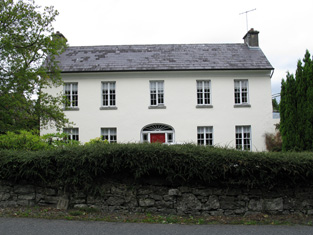
|
| Knockbane | Occupied by Anthony O'Flaherty at the time of Griffith's Valuation and valued at £33. The house no longer exists but extensive farm buildings are still visible. The property is still owned by descendents of Anthony O'Flaherty. |
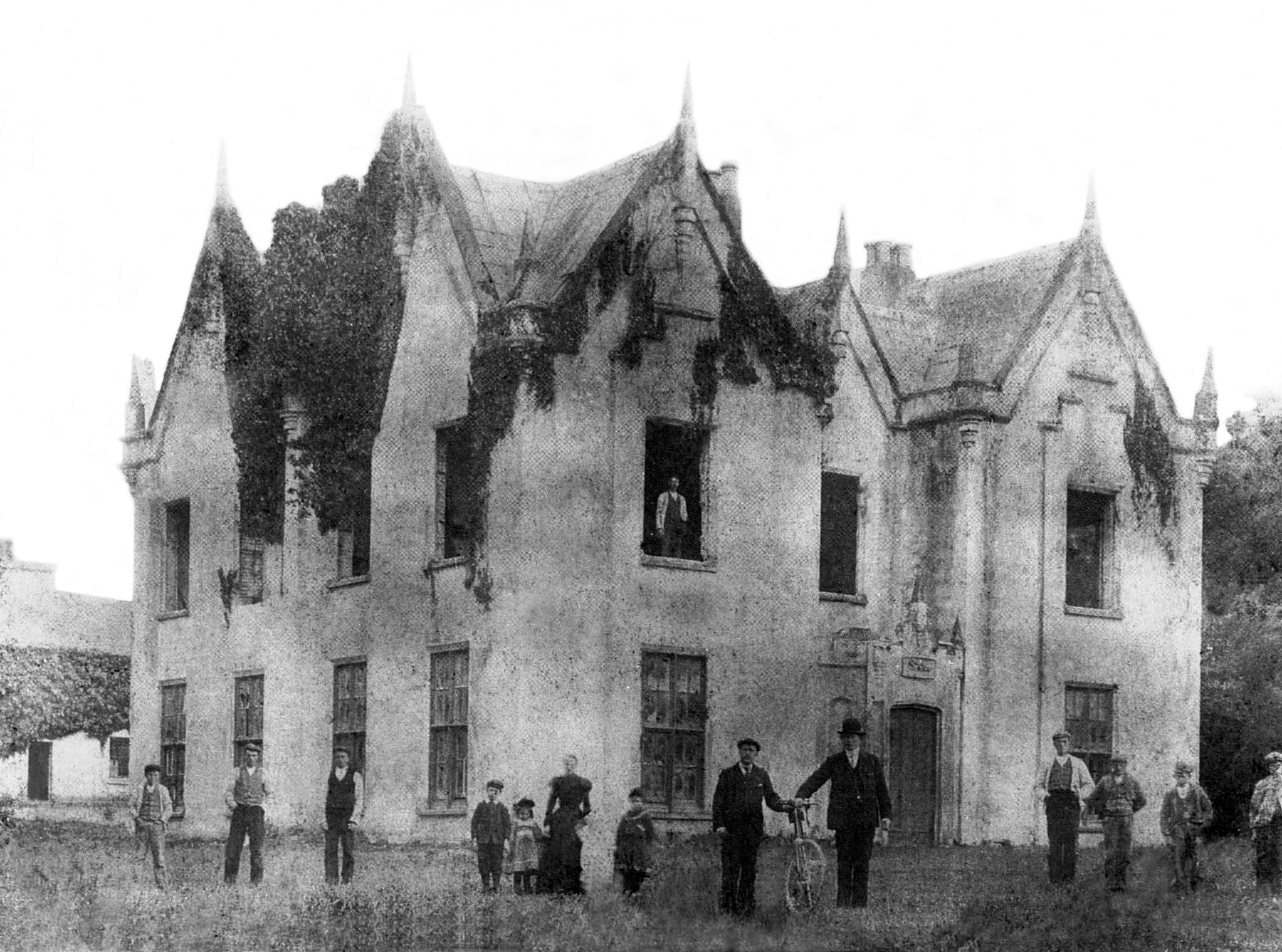
|
| Lemonfield | In 1786 Wilson writes that Lemonfield was the seat of Sir John O'Flaherty. George O'Flahertie was occupying the property at Lemonfield, at the time of Griffith's Valuation when it was valued at £20. The house is no longer extant. |
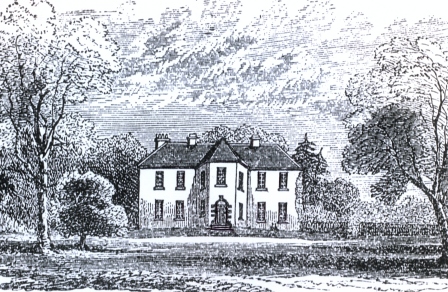
|
| Ardvarna | Occupied by A. Ross in 1837, John Scully at the time of Griffith's Valuation when it was valued at £16 and by Edward Jackson Fitzsimons in the 1860s. There is still an extant house at this site. |
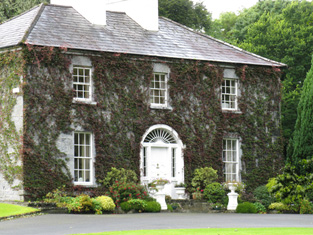
|
| Portacarron | In 1786 Wilson refers to "Portacairn" as the seat of Mr. French. At the time of Griffith's Valuation, there is no house with a substantial valuation in this townland, then in the possession of Marianne Nolan. There is no visible sign of the house now, some walls and parts of the stable yard remain. |
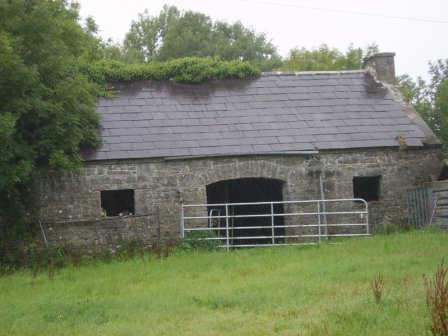
|
| Killaguile House | Built by James E. Jackson post Griffith's Valuation and possibly following his marriage in 1863. The house now functions as a hotel, known as Ross Lake House Hotel. |

|
| River View [Donaghpatrick] | This house was occupied by James Kearns in the 1850s, leasing from the Duke of Bedford's estate, when the house was valued at £8. It is still extant and occupied. |
![Photo of River View [Donaghpatrick]](https://landedestates.ie/storage/img/orig/184.jpg)
|
| Ross Lodge | Occupied by Anthony Blake in the second decade of the 19th century and by Walter John Blake in the 1830s. It was leased by Walter Blake from Anthony Blake at the time of Griffith's Valuation, when it was valued at almost £9. Named as Ross Lodge on the first edition Ordnance Survey Map the house seems to gone by the time of the 25-inch map in the 1890s. This may be the property referred to by Wilson in 1786 as "The Lodge, beautiful seat"of a Mr. Shaw. | |
| Claran House | The home of the Browne family in the 19th century. It was occupied by Arthur Dillon Browne in the early 20th century. |

|
| Winterfield House | Described in the 1830s as a neat 2 storied house, the home of Captain Butler. It was held in fee by John Butler at the time of Griffith's Valuation, when it was valued at £15. It is no longer extant. | |
| Srue | Occupied by Chris O'Flaherty in 1814 and marked on the first Ordnance Survey map 1838 in a triangle of land near the shore of Lough Corrib. Possibly built as a steward's or agent's house. It was listed as a herd's house by the time of Griffith's Valuation when it was held by the Law Life Assurance Society in fee. Remnants of the garden walls and of the farm buildings still remain. |

|
| Moyne Hill | Hughes writes that a Captain Carter bought Moyne Hill in 1852 from Charles Blake of Merlin Park. By 1906 James McDonnell was occupying the house. Soon afterwards it became the home of Thomas McDonagh of Headford Castle and his descendants still live there. The original house was knocked down circa 1950 and replaced by a modern bungalow. The original entrance gates and farm buildings are extant. |

|
| Annaghkeen | The castle was in ruins by the late 1830s. | |
| Thomastown | At the time of Griffith's Valuation, Thomastown House, barony of Clare, was occupied by James Clarke and valued at over £10. The National Inventory of Architectural Heritage indicates that this is a two-phase house, the original part dating from the early eighteenth century. It is still extant and occupied. |
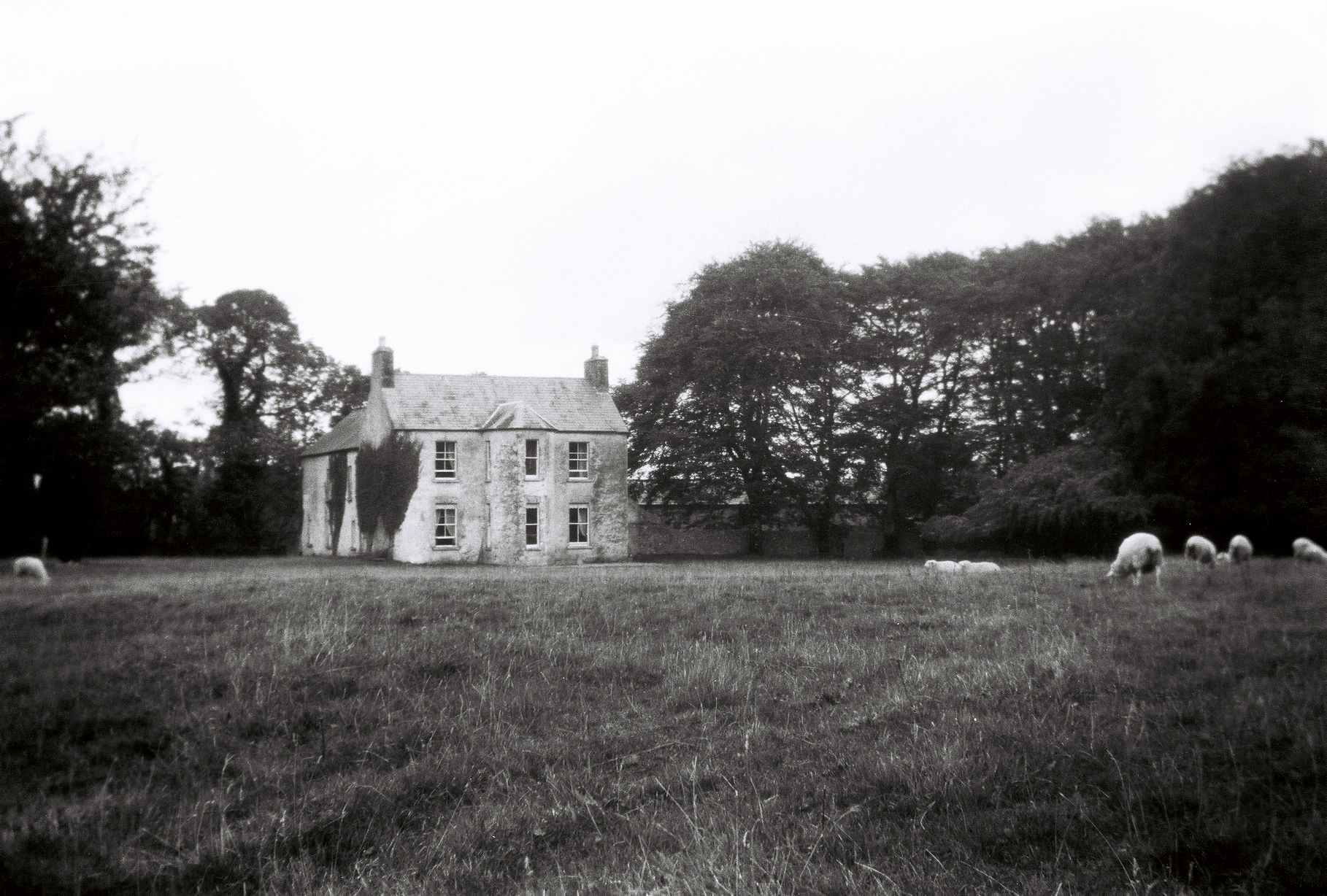
|
| Kilroe | The Hanley family were living at Kilroe in the early 19th century and it was the residence of John J. Gunning in the latter half of the 19th century. He had a mill closeby at Inish. |

|
| Mossfort | A house labelled Caherakeeny is shown here on the First ediiton Ordnance Survey map. It was valued at £12 and occupied by John Kilkelly at the time of Griffith's Valuation. The present house was constructed in the late nineteenth century and is labelled Mossfort on the 25-inch Ordnance Survey map of the 1890s. |
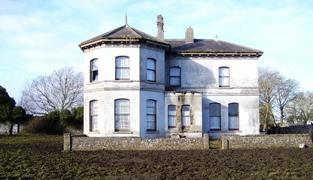
|
| Castlehacket | Castlehacket takes its name from the Hackett family who owned the land in the 14th century. An early 18th century house was built by the Kirwan family and lived in by their descendants until 1985. Wilson mentions it as the seat of John Kirwan in 1786. It was held in fee by Denis Kirwan at the time of Griffith's Valuation when it was valued at £40. Referred to as the seat of Bernard Percy Broderick by Slater in 1894. The original house of 3 storeys was burnt in 1923 and rebuilt at the end of the 1920s as a 2 storey house. The house has had a number of owners in the past 20 years. |

|
| Cahermorris | Occupied by Cecil Crampton in the mid 19th century. Two generations of Cramptons were rectors of Headford in the 18th century. A house still exists at the site as well as a fine entrance gateway. |
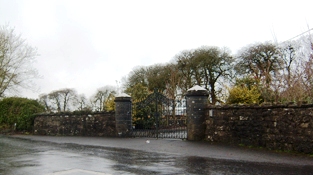
|
| Dennistown House | Built post 1838, occupied by Hugh Craven at the time of Griffith's Valuation and a centre for the Agricultural Institute in the late 20th century. | |
| Dalysfort | At the time of Griffith's Valuation the townland of Cahernaheeny belonged to James Maitland Kirwan, a member of the Kirwan of Dalgan family. It was leased by John Fitzgerald who was occupying Dalysfort House, then valued at £5. A house still occupies the site. | |
| Carrowbeg House | A former Bodkin house, the home of the Lynch family in the second half of the 19th century and early part of the 20th century. It was held in fee by Dominick Lynch at the time of Griffith's Valuation when it was valued at £8. It is still extant and in use. |
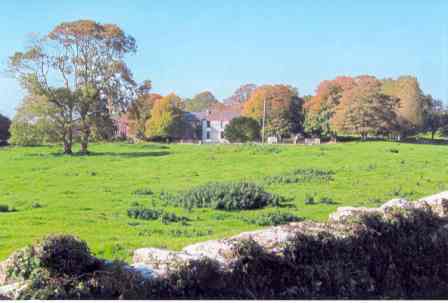
|
| Clydagh | Built in the early 1820s close to the shore of Lough Corrib, a residence of the Lynch Stauntons until the early 20th century and still occupied. IN 1894 Slater noted it as a seat of B. O'Neill Power. |
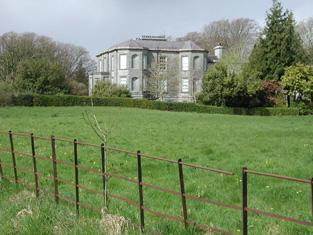
|
| Gortrevagh | A village is marked at Gortrevagh on the first Ordnance Survey map but on the revised edition of 1898-1899 the village is gone and a substanial building is marked instead. This may have been the residence of Edmund O'Flaherty. Some older buildings are included in what is now the golf club complex. | |
| Lisdonagh | An O'Flaherty home, built in the late 18th century, sold to the O'Mahonys in the late 19th century and passed by marriage to the Palmers. Now functions as a guest house run by John and Finola Cook. http://www.irelands-blue-book.ie/lisdonagh.htm |

|
| Mirehill | Home of Thomas Redington in 1814, Stepney St George in the 1820s and occupied by Michael Kelly in the 1850s, when it was valued at £4 and by Stephen R. Roche in 1906. It is no longer extant. | |
| Annaghdown | A house at this site on the First Edition Ordnance map is labelled Annaghdown House. The current house was built in 1868 by the Blake family It is still occupied and well maintained. |

|
| Ballinduff Lodge | A Skerrett home in the 18th and 19th centuries. It is labelled Ballinduff Lodge on the Ordnance Survey maps though the 25-inch edition of the 1890s notes that it was in ruins by then. At the time of Griffith's Valuation John Skerrett held the lands in fee when the house was only valued at £2. The old castle stands close by the house ruins. |

|
| Headford Castle | Richard J. Mansergh St George built Headford Castle in the early 19th century. In 1836 Robert Graham referred to an Elizabethan house 'just built', the architect was George Papworth. At the time of Griffith's Valuation it was held in fee by Richard M. St. George and valued at almost £46. Slater noted it as the seat of Thomas McDonagh in 1894. It burnt down in 1906. |

|
| Moycullen Lodge | Home of the French family in the 18th century. Wilson refers to it as the seat of Mr. French "situated on the side of a small lake". The Ordnance Survey Name Books mention it as the residence of Peter Lynch in the 1830s. It was leased by James Darcy or Thomas Fitzgerald from Lord Campbell's estate at the time of Griffith's Valuation when it was valued at £1+. A more substantial house was afterwards constructed at the site and is labelled Moycullen Lodge on the 25-inch map of the 1890s. It is no longer extant. | |
| Ballynalacka Lodge | In the sale rental of 1852 there is reference to the erection of a shooting lodge at Ballynalacka by the 'late proprietor' and a building named Ballynalacka Lodge appears in this townland on the 1st edition Ordnance Survey Map. It is labelled as "in ruins" on the 25-inch Ordnance Survey map of the 1890s. | |
| Shrulegrove | The ruin of the castle at Shrulegrove remains as a prominent feature in the village of Shrule. On the Ordnance Survey map of 1838 a substantial house and gardens are marked in the townland of Shrulegrove. All the townland, including a herd's house and offices valued at £1, were held by Richard Golding from the Duke of Bedford at the time of Griffith's Valuation. |
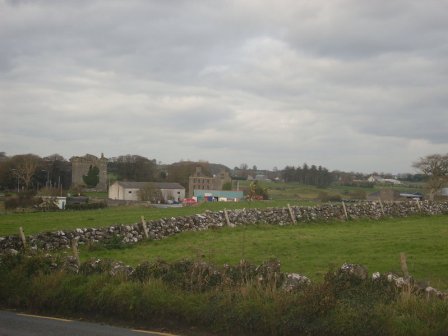
|
| Rockwell | The main residence of the Lynch family throughout the 19th century, valued at £13 in the mid 1850s. |

|
| Cloonteen | At the time of Griffith's Valuation occupied by George Jennings when the house was valued at £7. Some ruins remain at the site. | |
| Woodpark | Described in the sale rental of 1879 as "a good house, with stables, a walled garden, walled orchard and a park around the house which stands on an elevated site affording a fine view of lake scenery". Peter Newell was occupying the house, then valued at £4, at the time of Griffith's Valuation. It is now a ruin. |

|
| Carrownacroagh | Home of William Skerrett in the 1830s. By the time of Griffith's Valuation, the townland was in the possession of Dominick O'Flaherty but there was no house with a valuation greater than £2. |
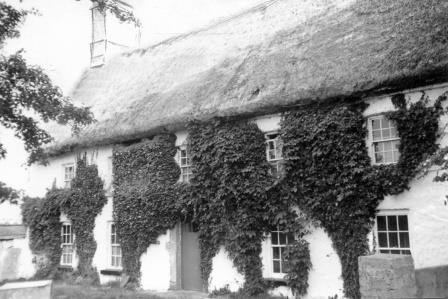
|
| Blake Hill | A house on the estate of the Provost and Fellows of Trinity College, Dublin, occupied by the Blakes of Menlo in the late 18th century/early 19th century. Thomas Blake of Brendrum, county Galway, married Mary Lynch, granddaughter of Sir Roebuck Lynch Blosse, 2nd baronet, and they were the parents of the 9th and 10th Blake of Menlo baronets. By the time of Griffith's Valuation the most valuable house in the townland of Breandrim was a herd's house of £4.15 occupied by C. B. Kenny. On the 25-inch edition Ordnance Survey map of the 1890s Breandrim House is recorded as "in ruins". Old yard walls remain at this site. |

|
| Cloonmore | At the time of Griffith's Valuation the house was valued at £3 and was held in fee by Charles Grant.It is labelled Cloonmore on both the 1st and 25-inch edition Ordnance Survey maps but is no longer extant. | |
| Ellistron Castle | A Browne castle, a house is marked close by as the residence of the Brownes in the 1770s. In 1786 Wilson refers to Ellistron as the seat of Mr. Browne. However there is no house at this location on the 1838 Ordnance Survey map but an avenue is shown there. | |
| Lisloughrey | This house is not marked on the first edition Ordnance Survey map but was built by the time Sir William Wilde's book on Lough Corrib was published in 1867. It was then occupied by William Burke, agent to Benjamin Lee Guinness. Occupied at the time of the 1901 census by Francis Turnly of Drumnasole, Garronpoint, Co Antrim, who was then agent to the Ashford estate. In the late 20th century the home of Rory Murphy manager of Ashford Castle Hotel. The building has now been greatly expanded and functions as a hotel http://www.lisloughreylodge.com | |
| Gortdrishagh House | The National Inventory of Architectural Heritage indicates that this house was built in the latter part of the nineteenth century. At the time of Griffith's Valuation, James O'Connor was leasing offices and land at Gortdrishagh from the Law Life Assurance Company. |
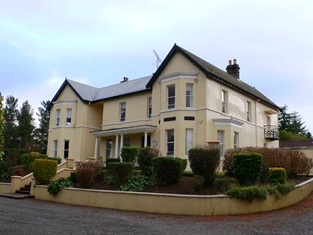
|
| Lodge (Headford) | In 1786 Wilson refers to Lodge as the seat of Mr. Shaw. A well laid out demesne, on which there is a small building, is depicted on the 1st edition Ordnance Survey map. The townland was in the possession of the St. George estate at the time of Griffith's Valuation but the only house was valued at 15s. |

